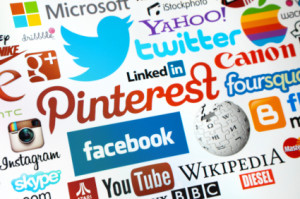How to Twitter Part 3 is the final post in my series on how I understand and use Twitter. My first two posts covered the Myths and Realities about Twitter and 5 Reasons Why I think you should use Twitter. This final post will discuss 5 points you should consider before you create your Twitter identity.
5 Points to Consider Before Creating Your Twitter Identity
- To create a platform for your research and publications?
- To interact and network with like-minded people?
- To stay up-to-date on the latest celebrity gossip?
Knowing what you hope to gain from your Twitter experience will help you craft your Twitter persona—the version of yourself that you present on Twitter.
2. What Do You Want Your Twitter Persona to Be?
Do you want to tweet mainly about work or play? Will your tone be mostly serious or funny?
Self-assess your personality. Tweet with the traits that will appeal most to your desired audience, but that will also present the genuine “you.” Your Twitter persona should represent a polished, but not too polished, version of you.
I use Twitter primarily to network and converse with other historians, writers, and alternative academics. I also use it to keep up with friends, news, my favorite sports teams, and events around Boston. I use the same account for all my tweeting, but I tweet more about history and writing than I do about the Red Sox.
How much information will you share on Twitter? Will you tweet about your friends and family members? Project your political and religious opinions for all to see?
I want my followers to know about my work and who I am as a person. I typically use first names or relationships when I tweet about family. One weekend I tweeted: “Enjoying a family day at the New England Aquarium.” This tweet allowed my followers to see that I have a life outside of my work and that I value time with my family. Its vagueness also maintained the privacy of my family members.
I do not over share. I may tell you that I am at a Red Sox game, but I won’t disclose what I am eating, wearing (usually my food), or cheering at the game.
With regards to hot button topics like politics and religion, I haven’t tweeted about them. I enjoy a good discussion or debate, but I would rather have them in person.
4. What Will Your Twitter Handle Be?
Your handle will be part of your brand so create one that people will easily identify with you, like your name.
Twitter limits tweets to 140 characters so shorten a long name with a nickname or initials. I publish under my full name: Elizabeth M. Covart. 16 characters is a bit much for people to Retweet (RT in Twitter lingo) so I use @lizcovart.
If you have a common name you might need to be creative by adding numbers, underscores, and abbreviations to your handle.
5. Will You Adhere to Good Twitter Etiquette Practices?
There are many rules for good Twitter Etiquette, but I think one rule is the most important: the 90-10 rule.
 90% of your Tweets should be about something other than self-promotion. Most Twitterers hate it when a person tweets only about their book, product, or blog posts. The best Twitterers are those who tweet to discuss, start a conversation, or to bring something of interest to the attention of their community, such as a blog post, book, news article, or event.
90% of your Tweets should be about something other than self-promotion. Most Twitterers hate it when a person tweets only about their book, product, or blog posts. The best Twitterers are those who tweet to discuss, start a conversation, or to bring something of interest to the attention of their community, such as a blog post, book, news article, or event.
Promote your work on Twitter, but make sure that it represents only 10% of what you tweet about.
One final tip, you might find it handy to know that Twitter has a glossary. Twitterers use a lot of abbreviations to save character space and the glossary will be helpful when you need to know what RT, MT, & FF means.





